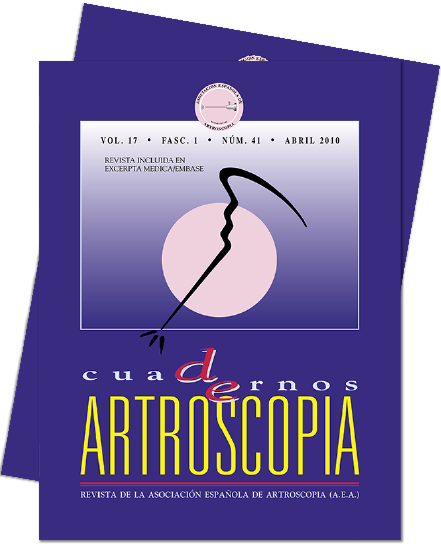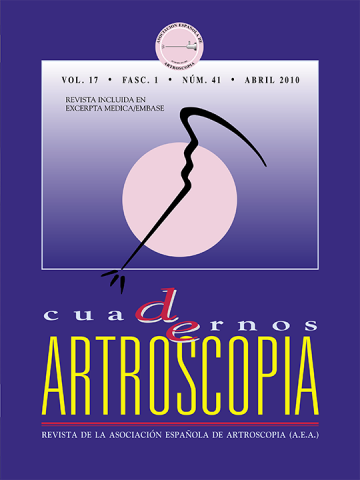Resumen:
Objetivo: presentar nuestra experiencia con las prótesis de recubrimiento en la articulación de la rodilla, para situar sus indicaciones en las lesiones osteocondrales.
Pacientes y metodología: estudio retrospectivo de 10 pacientes intervenidos con una prótesis de recubrimiento en la rodilla (Arthrosurface HemiCAP®, Arthrosurface, EE UU), 7 hombres y 3 mujeres, con una evolución superior a 6 años, todos ellos con edades comprendidas entre los 40 y los 60 años, con una edad media de 48 años. En 6 ocasiones se intervino la rodilla derecha, y en 9 casos, el cóndilo femoral interno. En 4 ocasiones los defectos fueron consecuencia de lesiones condrales, y 6 fueron diagnosticados de osteocondritis disecante.
Resultados: la actividad actual de los pacientes era muy buena o buena en 6 de ellos. Todos efectuaban su actividad diaria “mejor que antes”, y 1 de ellos realiza una actividad deportiva sin límite. En otros 2 pacientes la actividad diaria está limitada y, finalmente, otros 2 han tenido una mala evolución, que terminó con una prótesis total de rodilla.
Conclusión: siendo selectivos, este tratamiento puede mejorar la función articular y la calidad de vida durante muchos años.
Abstract:
Aims and objectives: to report our experience with resurfacing prostheses in the knee joint so as to establish their indications in osteochondral lesions.
Patients and methods: retrospective study of 10 patients, 7 men and 3 women (age range, 40-60 years; mean age, 48 years), who received a knee resurfacing prosthesis (Arthrosurface HemiCAP®, Arthrosurface, USA) with a follow- up of over 6 years. In 6 cases the involvement was in the right knee, and in 9, in the internal femoral condyle. Four cases were secondary to chondral lesions, and the remaining 4 had a diagnosis of dissecting osteochondritis.
Results: the current activity level of the patients was excellent or good in 6 cases. All of them carried out their daily activities “better than before”, and 1 of them performs sport activities without any limitation. Everyday activities are restricted in a further 2 patients, and a further 2 had a poor evolution resulting in total prosthetic knee replacement.
Conclusion: in selected patients, this therapeutic modality may improve articular function and quality of life over many years.
Keywords:
Resurfacing prosthesis
Osteochondral lesions
Dissecting osteitis/osteochondritis




